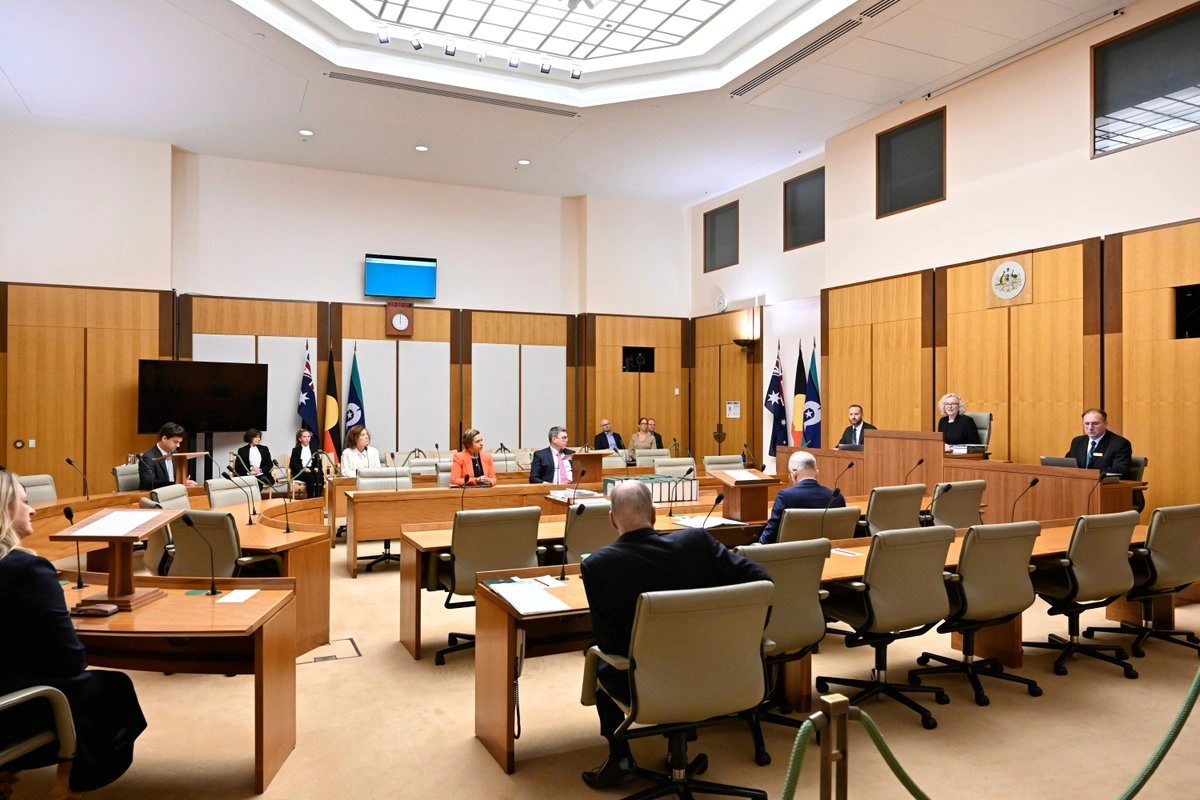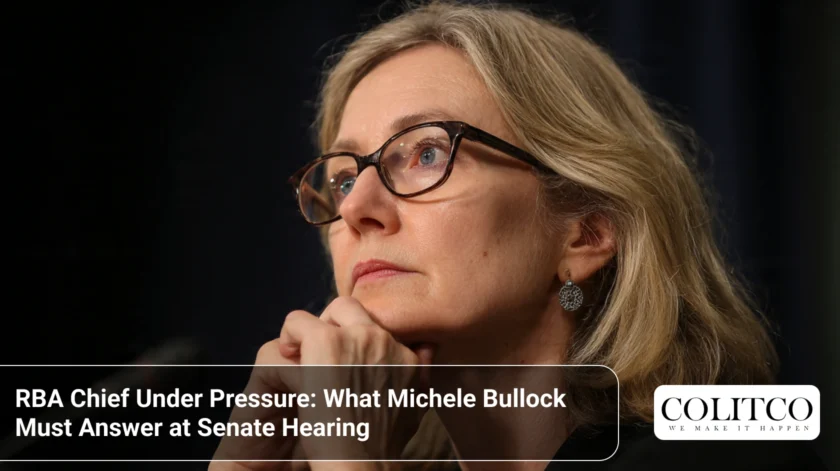Reserve Bank of Australia Governor Michele Bullock stepped into the Senate hearing room on Friday, facing a barrage of questions about interest rates, housing affordability, and inflation management. The timing couldn’t be more critical for millions of Australians watching every move from the central bank.
The Stakes Have Never Been Higher
Bullock’s appearance at Senate Estimates comes as property prices surge across major capitals despite earlier rate cuts. Housing values climbed between 2% and 6% in cities like Sydney, Melbourne, and Brisbane following previous RBA interest rate cuts this year.
The central bank cut rates twice in 2025, first to 4.10% in February, then to 3.85% in May. These moves provided relief to mortgage holders but triggered fresh concerns about housing affordability.
Assistant Governor Christopher Kent joined Bullock at the hearing, ready to field technical questions about monetary policy settings and financial market conditions.
RBA Governor Michele Bullock confirms Labor has turned the economy around with wages now rising, inflation down, interest rates down, taxes down.
“Real per capita wages are now above what they were pre COVID”
Lisa Darmanin “so overall that’s a pretty good story?”
Bullock “Yes”✅ pic.twitter.com/O3wvllBxj2— stranger (@strangerous10) October 10, 2025
Inflation Battle Not Yet Won
Current data shows Australia’s inflation sitting at 2.1% annually, comfortably within the RBA’s 2-3% target band. But underlying trimmed mean inflation remains elevated at 2.7%, suggesting price pressures haven’t fully subsided.
Bullock has repeatedly warned against complacency. “We do want to aim at the middle of the band because it gives us the best chance of staying within the target range,” she said at a recent press conference.
- Headline inflation: 2.1% (affected by temporary relief measures)
- Trimmed mean inflation: 2.7% (core price pressures)
- Services inflation: Still showing stickiness at elevated levels
Recent inflation data has strengthened arguments for continued monetary policy easing. Yet questions persist about whether the RBA moved too quickly or not quickly enough.
Housing Market Tensions Escalate
Property prices present the most visible challenge to the RBA’s balancing act. CoreLogic data reveals one in three Australian homes now costs over $1 million, roughly 13 times the average adult’s annual income.
Real estate economist Terry Rawnsley warned that falling interest rates act “like a price cut on the cost of debt,” pushing property values higher. This creates a cruel paradox: rate cuts meant to ease household pressure simultaneously make homeownership less attainable for first-time buyers.
Senators are expected to press Bullock on this dilemma. How can the RBA support economic growth without fueling another property boom?

RBA Governor Michele Bullock faces regular scrutiny over interest rate decisions.
Labour Market Remains Resilient
Australia’s unemployment rate held steady at 4.2% in August, near historically low levels. Employment participation sits close to record highs, suggesting the economy retains underlying strength despite subdued growth.
This resilience complicates the RBA’s decision-making. Strong labour markets typically warrant tighter monetary policy to prevent wage-price spirals. Yet weak productivity growth and cost-of-living pressures argue for continued support.
Bullock has acknowledged this tension, noting “some tightness remains” in labour market conditions even as hiring has cooled from pandemic-era peaks.
Market Pricing Vs. RBA Guidance
Financial markets currently price in at least one more rate cut by year’s end, with some analysts forecasting the cash rate could fall to 3.60% or lower. This expectation gap creates communication challenges for the central bank.
The RBA’s cautious stance reflects concerns about global uncertainty, including ongoing trade tensions and geopolitical risks. Deputy Governor Andrew Hauser has emphasised the need for “data-dependent” policy that responds to evolving conditions rather than predetermined paths.
Salary Spotlight: Bullock’s $1.2 Million Package
Recent revelations about Bullock’s compensation, $987,132 in base salary, rising to $1,195,275 with superannuation and allowances, will likely draw Senate attention. This exceeds the Prime Minister’s salary by nearly double.
While central bank chiefs globally command premium pay, the optics matter during a cost-of-living crisis affecting millions of Australians.
What Happens Next?
The November RBA board meeting looms as the next critical juncture. Market participants assign roughly 70% probability to another 25 basis point cut, which would bring the cash rate to 3.60%.
Key factors influencing that decision include:
- September quarter inflation data (due mid-October)
- Employment figures for September and October
- Global economic developments, particularly US Federal Reserve actions
- Housing market momentum and credit growth trends
NAB economists forecast as many as five rate cuts over the next 12 months, potentially taking the cash rate below 3%. AMP’s Diana Mousina expects “the Reserve Bank is going to keep cutting interest rates,” with the cash rate reaching 2.85% by early 2026.
The Bigger Picture
Bullock’s Senate appearance underscores the intense scrutiny facing monetary policymakers. Unlike her predecessors, who faced parliament bi-annually, Bullock holds eight press conferences yearly, part of post-review transparency reforms.
These changes aim to improve public understanding of RBA decisions. Yet they also expose the central bank to heightened political pressure, particularly when policy choices create clear winners and losers.
The falling Australian dollar, down to multi-year lows near 62 US cents, adds another layer of complexity. Currency weakness boosts inflation through higher import costs, potentially forcing the RBA to reconsider its easing bias.
Also Read: Develop Global Reports Doubling of Free Cash Flow at Sulphur Springs as Metal Prices Surge
FAQs
Q: When will the RBA cut interest rates again?
A: Markets expect a cut at the November meeting, with a 70% probability priced in. The decision depends on upcoming inflation and employment data.
Q: How do RBA interest rate cuts affect house prices?
A: Lower rates increase borrowing capacity, typically pushing property prices higher. This benefits existing owners but challenges first-time buyers.
Q: What is the RBA’s inflation target?
A: The RBA targets 2-3% inflation, aiming for the midpoint of 2.5% to provide a buffer against unexpected shocks.
Q: Will rates keep falling through 2026?
A: Most economists forecast continued cuts, with NAB predicting rates could reach 2.6% by early 2026. However, this remains highly uncertain and data-dependent.












